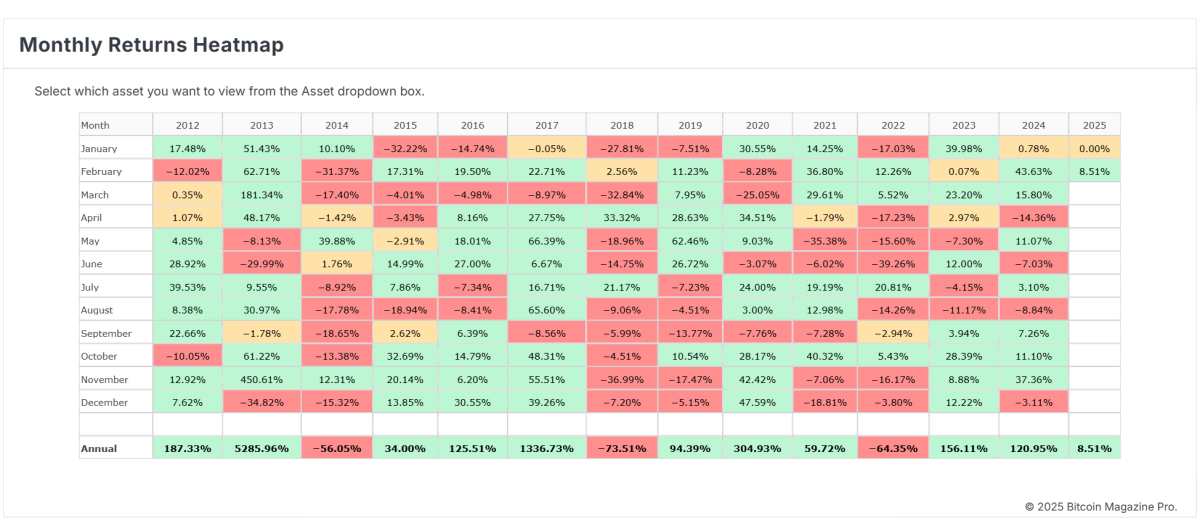Introduction to AI-Driven Customer Segmentation
Customer segmentation is a strategic approach that categorizes a diverse customer base into groups with shared characteristics, behaviors, or needs. In the financial services industry, this practice is vital for enhancing customer engagement, optimizing marketing efforts, and improving service delivery. By understanding distinct segments within their audience, financial institutions can tailor their products and services to align more closely with client preferences, ultimately driving satisfaction and loyalty.
The evolution of customer segmentation has been significantly influenced by advancements in technology, particularly the integration of artificial intelligence (AI). Traditional methods of segmentation often relied on demographic factors, such as age, income, and location, which, while useful, can fail to capture the complexity of consumer behavior. AI-driven customer segmentation enhances these traditional approaches by leveraging machine learning algorithms and data analytics to derive deeper insights into customer preferences and behaviors.
Through the analysis of vast amounts of data, AI can identify patterns and trends that may not be apparent to human analysts. For instance, AI systems can analyze transaction data, online interactions, and social media activity to create dynamic customer profiles that evolve over time. This level of segmentation allows financial organizations to move beyond one-size-fits-all solutions, offering personalized products and services that resonate more profoundly with individual customer needs.
The significance of AI-driven customer segmentation in financial services is further underscored by the industry’s competitive landscape. As the market becomes increasingly saturated, organizations that leverage AI to enhance their understanding of customer segments are better positioned to innovate and develop strategies that drive growth. Thus, the adoption of AI in customer segmentation not only enhances decision-making processes but also fosters a more customer-centric approach, where financial institutions can effectively nurture relationships and enhance customer outcomes.
The Role of AI in Financial Services
Artificial Intelligence (AI) has become a transformative force within the financial services industry, significantly enhancing operations and improving efficiencies. Financial institutions are increasingly leveraging AI technologies to analyze vast amounts of data, transforming raw information into actionable insights. This capability allows organizations to better understand market trends, customer behavior, and risk assessment, thereby streamlining their decision-making processes. By employing advanced algorithms, financial services can process data at unprecedented speeds, enabling real-time analysis and more informed strategies.
One of the primary applications of AI in financial services is predictive modeling, which empowers institutions to foresee market changes and customer needs. Through machine learning and statistical techniques, predictive models analyze historical data to identify patterns and forecast future outcomes. This has profound implications for risk management, fraud detection, and investment decision-making. For instance, by predicting potential risks associated with loan applications, banks can reduce default rates and enhance their credit assessment processes.
Moreover, AI plays a pivotal role in improving customer interactions. Chatbots and virtual assistants powered by natural language processing are increasingly utilized in customer service roles, offering personalized responses and resolving queries at any time of day. These tools not only enhance customer satisfaction but also reduce operational costs associated with traditional customer service methods. Additionally, AI systems analyze customer feedback and behavior, enabling financial institutions to refine their offerings and provide tailored solutions that meet individual needs.
Through these capabilities, AI is not merely a technological advancement; it represents a fundamental shift in how financial services approach customer engagement and service delivery. Consequently, the integration of AI not only empowers institutions to serve their clients better but also sets the stage for more targeted and effective customer segmentation strategies.
Data Collection and Integration
Effective customer segmentation in financial services relies heavily on the collection and integration of various types of data. Three primary categories of data are essential: transactional data, customer demographics, and behavioral data. Transactional data encompasses information related to financial transactions, such as spending patterns, frequency of transactions, and product usage. This data not only reflects a customer’s financial habits but also enables organizations to assess profitability and risk levels associated with different customers.
Customer demographics comprise critical information including age, gender, income level, education, and geographic location. This data serves as the foundational layer for understanding customer segments based on socio-economic factors, enabling more targeted marketing strategies. By categorizing customers demographically, financial institutions can tailor their offerings to meet the specific needs of varied groups. Behavioral data, on the other hand, focuses on how customers interact with services, including online engagement, response to marketing campaigns, and service usage patterns. Analyzing this data grants insights into customer preferences and trends.
The collection of this diverse data is accomplished through various channels such as online forms, surveys, CRM systems, and transaction records. After data collection, the next step is data cleaning and integration. Cleaning involves identifying and rectifying inconsistencies and errors, ensuring that the data is accurate and reliable. Integration involves combining data from disparate sources into a unified customer profile, allowing for a comprehensive view of each customer.
Utilizing advanced AI-driven techniques enhances this process by automating data cleaning and improving integration efficiency. Consequently, financial services organizations can derive deeper insights from their customer profiles, facilitating more informed decision-making and effective segmentation strategies. These steps are fundamental in developing a robust foundation for customer segmentation initiatives.
Segmentation Techniques Used by AI
Artificial Intelligence (AI) has significantly transformed customer segmentation within the financial services sector. Several AI techniques, including clustering algorithms, machine learning models, and natural language processing (NLP), play a pivotal role in analyzing vast datasets to segment customers effectively. These advanced methods present key advantages over traditional segmentation techniques, which often rely on predefined criteria or simplistic demographic characteristics.
Clustering algorithms, such as k-means and hierarchical clustering, analyze customer data by identifying natural groupings within the data. These algorithms sift through complex datasets, uncovering hidden patterns based on behavioral and transactional characteristics. Unlike traditional methods that may focus solely on demographics, clustering can reveal more nuanced insights about customer preferences, spending behaviors, and risk profiles, resulting in more effective segmentation.
Machine learning models further enhance segmentation by employing predictive analytics. Tools like decision trees and random forests utilize customer data to predict future behaviors and trends. This predictive capability allows financial institutions to anticipate customer needs and tailor marketing strategies accordingly. These models evolve constantly as they receive new data, ensuring that customer segments remain relevant and up to date, a stark contrast to static traditional methods.
Natural language processing is another AI technique that proves valuable, particularly in sentiment analysis. By analyzing textual data from social media, customer reviews, and feedback surveys, NLP can help financial institutions understand customers’ sentiments and emotions. This insight enables a more customer-centric approach to segmentation, as institutions can group customers based on their feelings toward products and services.
In summary, the integration of AI-driven techniques for customer segmentation in financial services offers substantial advantages over traditional methods. By leveraging clustering algorithms, machine learning, and natural language processing, organizations can gain deeper insights into their customer base, refining their marketing strategies and enhancing customer engagement.
Behavioral Segmentation and Predictive Insights
Behavioral segmentation is a crucial component in understanding customer dynamics within the financial services sector. This method segments customers based on their behaviors, such as purchasing habits, product usage, and service interactions. By leveraging artificial intelligence (AI), financial institutions can not only identify these behaviors but also predict future actions, preferences, and needs of their clientele. This predictive capability enhances the ability of institutions to tailor their services and offerings, ensuring they align more closely with customer expectations.
AI employs advanced algorithms and machine learning techniques to analyze vast datasets, unveiling patterns that were previously invisible. For instance, through examining transaction histories, institutions can predict when a customer is likely to make a purchase or when they might require assistance with a specific product. This form of predictive analytics enables financial service providers to proactively engage customers, effectively addressing their needs before they express them, thereby enhancing customer experience and satisfaction.
Case studies highlight significant outcomes from the implementation of behavioral segmentation coupled with predictive insights. One notable example involves a retail bank that utilized AI to segment its customer base. By analyzing customer interactions across various touchpoints, the bank identified specific behaviors that indicated potential cross-selling opportunities. Consequently, targeted marketing campaigns led to a remarkable increase in product uptake, with the bank achieving a 30% improvement in conversion rates. Another example can be found in a wealth management firm, which employed predictive analytics to anticipate client needs regarding investment products. This proactive communication resulted in high engagement levels and a corresponding growth in client retention.
As these examples illustrate, employing AI-driven behavioral segmentation not only refines marketing strategies but also enhances overall service delivery and customer loyalty in the financial services sector.
Dynamic Segmentation and Real-Time Insights
In the rapidly evolving financial landscape, leveraging AI-driven customer segmentation techniques is essential for organizations seeking to maintain competitive advantage. Dynamic segmentation, facilitated by advanced artificial intelligence, enables financial services to analyze customer data in real-time, allowing for immediate adjustments to segmentation strategies based on evolving behaviors and market conditions. Traditional segmentation methods, which often rely on historical data and static profiles, are gradually becoming less effective. Instead, organizations are turning to AI technologies that provide insights into current customer needs and preferences.
Dynamic segmentation focuses on grouping customers into segments that can change as their behaviors evolve. For instance, an AI system may identify shifts in customer spending habits, preferences for financial products, or responsiveness to marketing efforts. By harnessing these insights, financial institutions can rapidly adapt their offerings and engagement strategies, ensuring they are meeting the current demands of their clientele. The agility offered by AI-driven segmentation is particularly critical in an environment where customer expectations are constantly changing and competition is fierce.
Furthermore, real-time insights created through AI allow for timely marketing interventions, personalized service delivery, and strategic decision-making. These insights empower financial institutions to identify not only who their customers are but also how their needs might shift over time. The enhanced understanding gained from real-time data analytics improves customer relationships, leading to increased loyalty and retention.
In summary, dynamic segmentation powered by AI represents a paradigm shift in customer understanding within financial services. By adopting these methodologies, institutions can ensure they remain responsive and proactive, effectively managing relationships through tailored offerings that align with the evolving landscape. Embracing this level of agility is not just advantageous; it is essential to thrive in today’s competitive financial environment.
Challenges and Considerations in Implementation
The integration of AI-driven customer segmentation into financial services presents several challenges that organizations must navigate. One of the primary concerns is data privacy, as financial institutions manage large volumes of sensitive customer information. Compliance with regulations such as the General Data Protection Regulation (GDPR) and the California Consumer Privacy Act (CCPA) necessitates the implementation of robust data management practices. Organizations must ensure that their AI systems adhere to these regulations to protect customer data and avoid significant fines.
Another challenge is the integration of AI technologies with existing systems. Financial institutions often rely on legacy systems, which may not easily accommodate the sophistication of AI applications. This discrepancy can lead to integration issues, requiring substantial investments in infrastructure or the redesign of existing processes. Additionally, achieving a seamless flow of data between various departments is crucial for effective segmentation and will involve overcoming the hurdles posed by disparate systems.
The demand for specialized skills is also an important consideration in implementing AI-driven segmentation. Financial services organizations often lack personnel with the necessary expertise in data science and machine learning, which are essential for designing, developing, and maintaining AI systems. Organizations may need to invest in training existing staff or recruiting new talent, further complicating the implementation process and potentially increasing operational costs.
Moreover, ethical considerations surrounding the use of AI in customer segmentation cannot be overlooked. There is a risk of biases within the algorithms that can lead to unfair treatment of certain customer segments. Continuous monitoring and adjustment of these algorithms, alongside transparent practices, must be prioritized to maintain trust and ensure equity among customers. Thus, careful planning and addressing these challenges is essential for successful AI-driven customer segmentation in financial services.
Benefits of AI-Driven Customer Segmentation
The integration of AI-driven customer segmentation within the financial services sector offers numerous advantages that can significantly enhance business operations and customer interactions. One of the most prominent benefits is improved targeting for marketing campaigns. By employing sophisticated algorithms, financial institutions can analyze vast datasets to identify specific customer segments based on behaviors, preferences, and financial needs. This targeted approach allows marketers to craft personalized messages and offers, increasing the likelihood of customer engagement and conversion rates.
Furthermore, AI-driven customer segmentation promotes enhanced customer satisfaction. By understanding the unique characteristics and requirements of different segments, financial institutions can provide tailored solutions that resonate with their clientele. For instance, a bank that recognizes high-net-worth clients may offer exclusive investment opportunities that align with their financial goals, thereby fostering a sense of appreciation and loyalty. This level of personalization contributes to a positive customer experience, ultimately leading to higher satisfaction scores.
Increased retention rates are another significant benefit derived from effective AI-driven segmentation. When customers feel that their specific needs are being met and that they receive personalized communication, they become more likely to remain loyal to the institution. A case in point is a financial service that identified a segment of clients showing signs of potential disengagement and proactively reached out with customized offerings. Not only did this action retain those clients, but it also strengthened their relationship with the institution.
Ultimately, these improvements in targeting, customer satisfaction, and retention lead to higher profitability for financial services firms. A well-segmented customer base allows institutions to allocate resources more efficiently and optimize their product offerings. By leveraging AI capabilities, firms can stay ahead of the competition and drive sustainable growth in an ever-evolving marketplace.
Future Trends in AI-Driven Customer Segmentation
The landscape of financial services is continually evolving, and with it, the application of AI-driven customer segmentation is set to undergo significant transformation. Emerging technologies such as machine learning, natural language processing, and big data analytics are paving the way for more advanced customer insights, enabling financial institutions to understand their clientele on a granular level. By harnessing these technologies, firms can analyze vast amounts of data in real time, leading to more accurate customer segmentation that considers behavioral patterns, preferences, and even emotional states.
As customer expectations shift towards more personalized experiences, financial services will need to adapt their segmentation strategies accordingly. Today’s consumers are increasingly demanding tailored products and services that cater to their individual needs. To meet these expectations, financial institutions are likely to implement sophisticated algorithms that not only segment customers based on demographic factors but also align with their life stages and financial goals. This evolution will allow organizations to interact with customers more meaningfully, thereby enhancing customer satisfaction and loyalty.
In addition to evolving customer expectations, privacy and data security concerns will play a crucial role in shaping the future of AI-driven customer segmentation. With an increasing focus on ethical data usage, financial institutions will need to ensure that their data practices comply with regulations while still providing personalized experiences for customers. Innovations such as federated learning, which allows models to learn from decentralized data without compromising privacy, could become essential in this realm.
Ultimately, the future of AI-driven customer segmentation in financial services appears promising, characterized by advanced analytics, personalized offerings, and a heightened emphasis on data ethics. Financial institutions that successfully adapt to these trends will not only maintain a competitive edge but will also foster deeper connections with their customers, paving the way for sustainable growth in an increasingly dynamic market.










